The vast herds of Buffalo that formerly roamed the Great Plains (an expanse of flatland in North America) relied on this grass for sustenance. In comparison to other warm-season grasses, it has been found to be more drought- and cold-tolerant, making it a prime candidate for use as a lawn grass. But is it suitable for your yard? Read on to find out about Buffalo grass lawn!
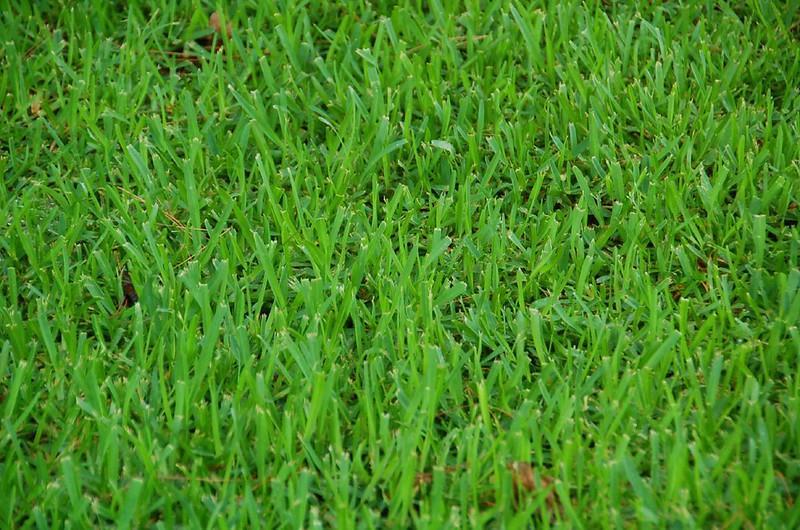
Buffalo grass lawns are more drought-tolerant and cold-resistant compared to other warm-season grasses.
Buffalo grass is a perennial species of grass that grows throughout the warm season. It is capable of creating mats and spreading by stolons, which, when they come into contact with the ground, send out roots and give rise to new plants. It is native to Colorado and much of the North American Great Plains and is highly adaptable.
As turf grass, buffalo grass requires little care and is exceptionally resilient. Historically, buffalo grass has been costly and challenging to establish, but modern cultivars have reduced these issues. Some states classify this wild grass as a noxious weed, but it serves a valuable purpose in animal pastures.
Keep reading if you want to learn more about buffalo grass.
Related: How To Trim Extremely Long Grass? A Comprehensive Guide
A Quick Look At Buffalo Grass
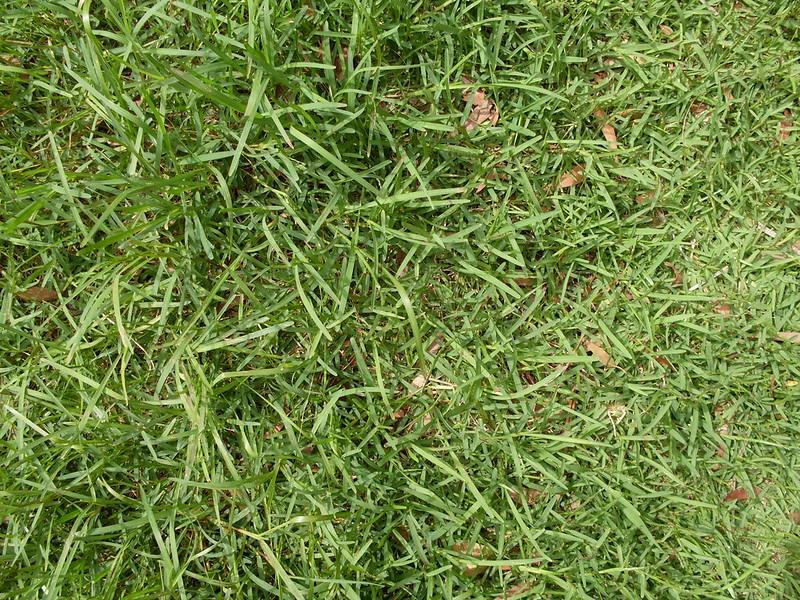
Often referred to as Buffalo Grass, Bouteloua dactyloides spreads rapidly via rhizomes to form a dense carpet.
Buffalograss is a warm-season perennial grass that typically reaches a maximum height of 10 inches. The ability of buffalo grass to persist in harsh environments comes from a combination of factors, including its resistance to extended droughts and high temperatures, as well as its capacity to produce seeds.
In a nutshell, the following are some of the most notable qualities that are attributed to buffalo grass:
| Common Name | Common buffalo grass, Sydney Common, Sydney soft-leaf buffalo |
| Scientific Name | Bouteloua dactyloides |
| Plant Family | Poaceae |
| Native Region | Canada, Mexico, and the United States |
| Ideal Planting Time | Spring and until late July |
| Plant Type | Perennial |
| Hardiness Zones | 3 to 9 |
| Ideal Mowing Height | Twenty-five to 50 millimeters |
| Grass Color | Gray-green or blue-green |
| Grass Texture | Fine |
| Sunlight Needs | At least 6 hours of direct sunlight per day |
| Ideal Soil Type | Well-drained, non-sandy soils |
| Soil pH | 6 to 8 |
| Drought Tolerance | Excellent |
| Disease Resistance | Good |
| Traffic Tolerance | Excellent |
| Water Needs | 1/4- inch of water per week |
| Fertilizer Requirements | 1 or 2 pounds of nitrogen per 1,000 square feet per year |
| Shade Tolerance | Excellent |
What Is Buffalo Grass?
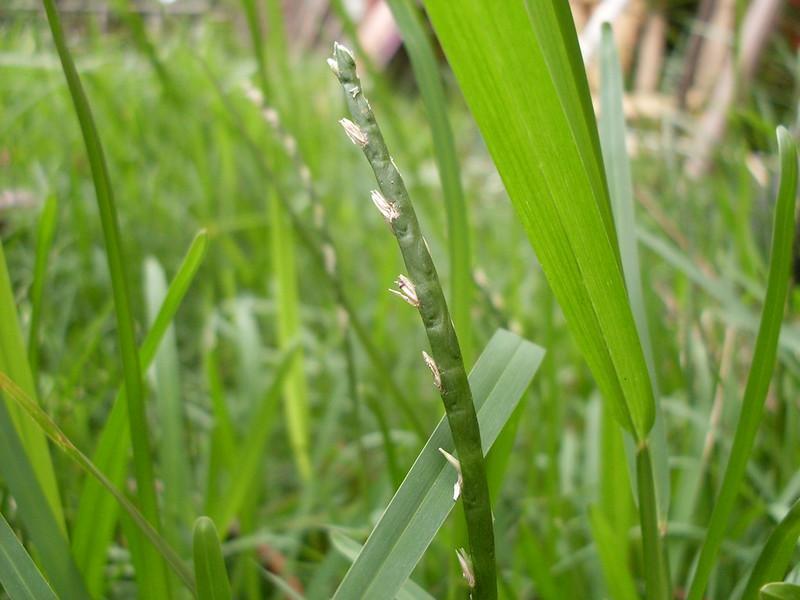
Buffalo Grass is a native North American perennial turf grass that grows to a height of 12 inches (30 cm).
What is buffalo grass? It is the only indigenous grass that can be used as lawn grass. The buffalo grass can spread both through its surface runners, often known as stolons, and by its seeds. It grows into the turf with a fine texture that is relatively thin and has a bluish-green color. It is an excellent option for “no-mow” lawns due to its fine-textured, arching, gray-green foliage and to grow to a height of 10 to 12 inches if not mowed.
In comparison to other warm-season grasses, it has been found to be more drought- and cold-tolerant, making it a prime candidate for use as a lawn grass.
Lawns made of buffalo grass are extremely widespread, and golf courses made from its seed are also relatively common.
However, buffalo grass has fallen out of favor as a lawn choice for many homeowners because of its lengthy dormant period, high cost, and challenging establishment. Some newer varieties of buffalo grass aim to solve this problem, and they are also weed-resistant and need even less watering.
Top Buffalo Grass Varieties
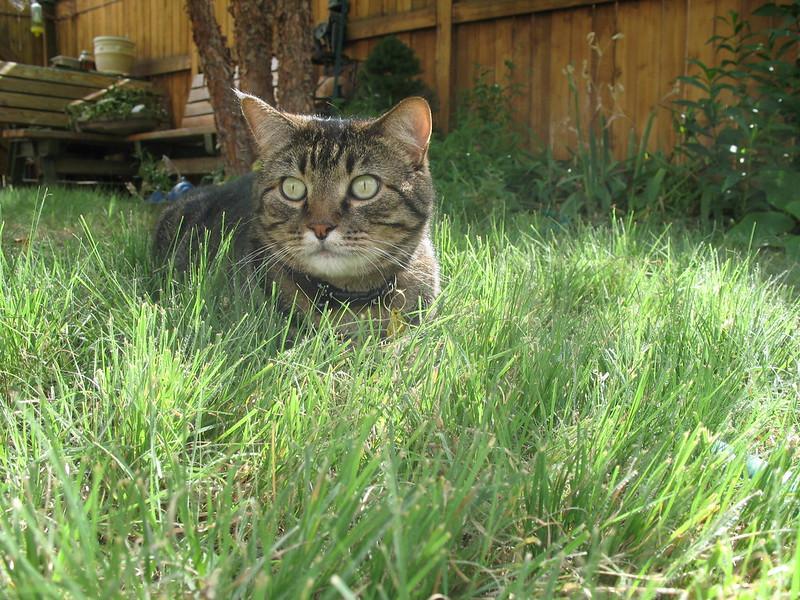
Nearly all buffalo grasses available now are soft-leaf, and they are known mostly by their brand names.
When evaluating Buffalo turf types, see which one will be best for your space, needs, and climate. There are a lot of different kinds, including Bowie, Cody, Plains, and Topgun.
Also, keep in mind that some kinds of buffalo grasses can only be purchased in vegetative sod or plugs. These vegetative grass types will produce the highest quality lawn possible, but building a yard will be more expensive than using seeds. Nevertheless, here are some of the best buffalo grass cultivars available on the market:
Palmetto Buffalo
Palmetto is the most popular Buffalo in the world in terms of sales. It requires less watering and is a fantastic alternative for families with children and dogs because it is very durable and requires little care. Moreover, the dense growth of palmetto makes it more difficult for weeds to establish themselves in the grass.
Sapphire Buffalo
The Sapphire Buffalo is a variety of grass that is resistant to wear, has a low thatch, and retains its color throughout the winter. As a bonus, the leaf’s natural folding pattern makes it exceptionally pliable and often prevents damage from frost.
Also, independent trials conducted by the Department of Primary Industry and Horticulture Innovation determined that this Soft Leaf Buffalo has the highest level of shade tolerance of any Buffalo type.
Prestige Buffalo
This new generation of Soft Leaf Buffalo is quickly becoming one of the most popular and cutting-edge buffalo grasses available today. It is well-known for its constant dark green color, resistance to wear and tear good recuperation, and ability to withstand drought.
In addition to this, it has a shade tolerance of up to 70 percent when subjected to light wear and up to 50 percent when subjected to moderate to severe use.
Matilda Buffalo
Matilda Buffalo turf prefers sunlight but can sustain high levels of wear and tear. Therefore, it is best suited for sunny and hot areas as this species of buffalo grass is one of the few that can keep its green winter color even when exposed to direct sunlight.
DNA Certified Sir Walter Buffalo
There’s a good reason why DNA Certified Sir Walter lawns are the most popular variety of buffalo turfgrass in many places. In addition to being resistant to drought, shade, and frost, this type heals quickly and produces few allergens.
Sir Walter DNA Certified Soft Leaf Buffalo Grass is also of the highest quality and provides a lawn that is luscious, long-lasting, and hard-wearing.
Related: Most Effective Barriers To Keep Cars Off Grass | Stop Cars From Entering Your Lawn
How To Establish A Buffalo Grass Lawn?
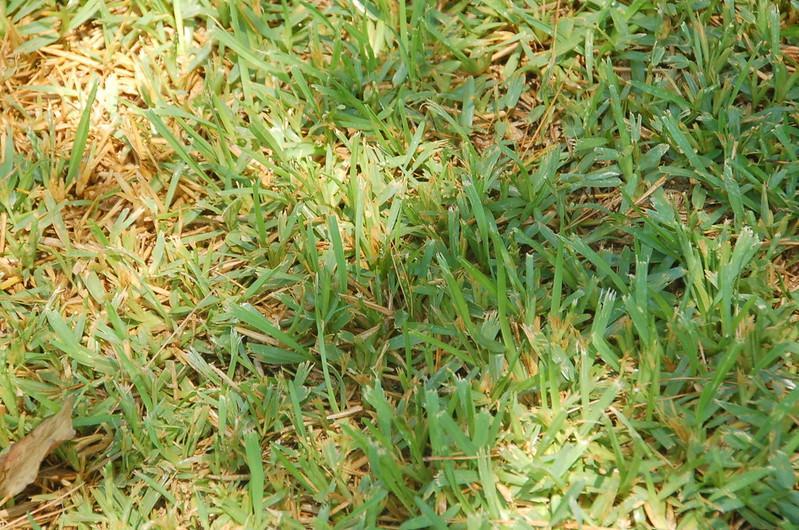
You’ll need patience and persistence if you want a buffalo grass lawn.
Both seed (also known as burs) and sod can be used to start a buffalo grass lawn. Additionally, improved cultivars can be purchased as seeds, plugs, or sod for planting. However, for the best results, you should select those developed for establishing lawns rather than those developed for renovating pastures or rangelands.
Best Time To Establish A Buffalo Grass Lawn
As is the case with the vast majority of warm-season grasses, the spring and summer months are the most favorable for the establishment of buffalo lawns. Therefore, April and May are the best months to sow this grass. During this time period, you will need to begin mowing your lawn more frequently; however, it will flourish.
Sodding A Buffalo Grass Lawn
The establishment of buffalo grass can be accomplished using sod plugs or pieces of sod that are at least 2 inches square. Depending on how quickly a complete cover is desired, plants can be spaced anywhere from six inches to two feet apart from one another.
As a rule, only female plants are used in the production of sod to prevent the appearance of prickly male seed heads. A lawn made of buffalo grass can be established through sodding in the quickest, easiest, and least frustrating way possible.
However, the cost of buffalo grass sod is significantly higher than that of bluegrass sod, and the availability of buffalo grass sod is generally lower.
When planting, you should dig a sufficiently deep hole to set the plants in, but not so deep that the grass will be buried. It is essential to pack the soil closely around the plants. The pieces of sod will die if the ground is layered over them in any way.
Plugging A Buffalo Grass Lawn
When appropriately used, plugs that have already been rooted can provide complete cover anywhere from six to twelve weeks after planting. Plugs are planted at a depth of 2 12 inches (6 cm) and on spacing ranging from 6 to 24 inches (15-61 cm).
For best results, apply a starter-type fertilizer according to the instructions on the label at the time of planting, and then do so once more approximately six to seven weeks after planting.
Even if adequate irrigation is provided, the buffalo grass plugs will frequently turn brown after being planted. This is completely normal. Once the plugs have established a robust root system, the grass will awake from its winter slumber.
So, even if the plugs turn brown and appear dormant, it is crucial to keep the soil moist after planting. Therefore, water keeps the surface damp for seven to ten days and keeps the grass actively growing after that. When planting plugs, using the pre-emergent herbicide pendimethalin is also good to prevent weeds from taking root in your establishing yard.
Seeding A Buffalo Grass Lawn
It is possible to plant grass seed at any time during the spring and up until the end of July. However, seeds that are planted in the early spring will not germinate until the soil temperature rises above 55 degrees Fahrenheit in the late spring.
When planting seeds, essential considerations to keep in mind include seed treatment, seeding rate, and date of planting. Depending on the method of planting and the amount of time that is available to obtain a cover, the amount of seed that should be planted per 1,000 square feet can range from less than 0.5 pounds to between 4 and 6 pounds.
In addition, preparing the seedbed is essential for achieving a uniform lawn and successful seeding. When the soil is dry, it should be level, free of rocks and other debris, and firm enough to walk on without causing your feet to sink in more than an inch.
After the ground has been prepared, seeds should be broadcast at a rate of two pounds per 1,000 square feet, and then a light raking should be used to incorporate the seeds into the ground.
It is also essential to keep in mind that treated seed, seed that has been chilled at 5 to 10 degrees for 6 to 8 weeks, or seed that has been treated chemically to break dormancy, has a much higher germination rate.
Caring For Buffalo Grass Lawns
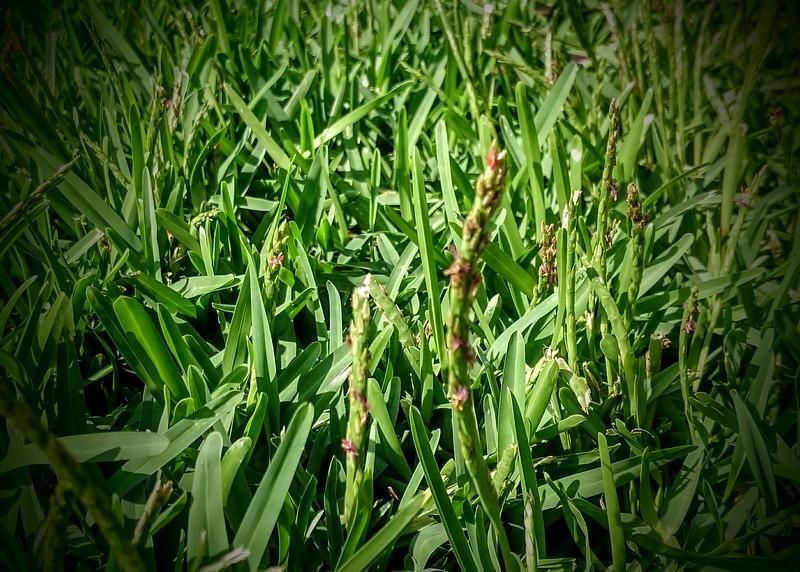
This is a low-maintenance turf, and treating it like a baby will actually cause it to lose some of its vigor.
It is strongly recommended that buffalo grass be used only in low-use, low-maintenance turfgrass areas. It does not persist in areas where there is heavy use.
As a result, buffalo grass turf requires only very little in the way of upkeep and maintenance. Here are some of its care requirements described in brief:
Mowing Buffalo Grass
To keep the turf in the best possible condition and prevent it from becoming overgrown, buffalo grass must be mowed at the correct height. For example, a Buffalo lawn in excellent condition may require mowing every five to seven days. In contrast, a lawn in average condition may only need to be cut once every two weeks during the summer.
It is recommended that the height of cut for all soft-leaf Buffalo lawns be between 35 and 65 millimeters. If it is cut any shorter than this, the lawn will lose its lovely green leaf, which may leave the lawn with a yellow color and make it prone to weeds.
Buffalo Grass Sunlight Needs
Uninterrupted exposure to direct sunlight throughout the day is, of course, ideal. However, a grass lawn can keep its green and healthy looks if it receives direct sunlight for anywhere from six to eight hours per day.
However, the most obvious negative effect of growing Buffalo in full sun is that its dense thatch layer grows much faster and to a much greater depth.
Buffalo Grass Soil Needs
In spite of its adaptability to a wide range of soil types, buffalo grass thrives in sandy environments. It does not fare well in soggy conditions and prefers soils that drain quickly.
Common Buffalo Grass Issues
Most grass varieties are quite resistant to diseases. Nonetheless, Buffalo grass is susceptible to Brown Patch, a fungal disease. Avoiding watering your Buffalo lawn in the evening, removing thatch, and applying a balanced fertilizer in moderate amounts are the three most effective ways to manage Brown Patch.
There are times when the Brown Patches are encircled by a gray and smoky outer ring, and there are also times when just this outer ring is encircled by green grass in the middle.
In such cases, you can also resort to using a fungicide in your yard. If you find any evidence of weeds in your lawn, you should begin by attempting to remove them by hand. However, if the weeds are widespread across the entire yard, you should use a safe herbicide on Buffalo grass.
Herbicides that contain the active ingredients bromoxyl or MCPA are typically regarded as being risk-free for use on buffalo grass. However, products containing herbicides should be used with caution. In addition to carefully following all of the instructions on the label, the product should only be used in very small amounts.
Last but not least, be on the lookout for African Black Beetle and Lawn Grub, which can take the form of the Web or Army Worm. Utilize pesticides that are appropriate for the Buffalo lawn, and make sure to follow the application instructions on the label. Consult the staff at the Garden Center in your area for guidance.
Buffalo Grass Fertilizer Requirements
Putting down fertilizer on a lawn in Buffalo isn’t exactly rocket science. However, it does require a bit more iron than other types of grass.
Aside from that, established buffalo grass only has a need for one or two pounds of nitrogen per one thousand square feet per year. So choose a fertilizer with a nitrogen-to-phosphorus-to-potassium (N-P-K) ratio of 3-1-2 or 4-1-2, and make sure that at least 35 percent of its nitrogen is slow-release.
The majority of the nutrients that your Buffalo grass seed requires are already being delivered to the roots of your grass in minute quantities by processes inherent to the soil’s natural environment.
Also, you shouldn’t apply fertilizer to the buffalo grass in the fall or the spring because, at this time, buffalo grass isn’t actively growing. It will cause the fertilizer to be wasted, and the buffalo grass will not benefit from it in any way.
Watering Buffalo Grass
The way that you should water your Buffalo Lawn will change depending on the seasons and the environment. For example, if the temperature outside is extremely high, it is in the best interest of the Buffalo lawn to increase the amount of water used for each watering.
In a similar vein, regions prone to high winds or Buffalo lawns surrounded by a large number of heat-absorbing surfaces, such as corner blocks or excess paving, will need additional watering. Also, unlike the shallow roots associated with frequent light watering, the grass’s robust root systems can extract water from a much larger volume of soil when given deep, infrequent watering on a regular basis.
Ideal Soil PH For Buffalo Grass
The pH level that works best falls somewhere in the range of 6.0 and 7.5. Your community’s cooperative Extension service can provide access to various types of soil testing and recommendations and guidance regarding the best ways to amend the soil.
Buffalo Grass Shade Tolerance
Buffalo grass is a type of lawn that thrives in partially shaded areas. However, compared to other warm-season lawn types, Buffalo not only has one of the highest shade tolerances, but its growth and appearance are compromised when it is exposed to direct sunlight.
Related: Rhizome & Stolon Grasses: What Are They & Why Are They Amazing?
Final Thoughts
Buffalo grass is an excellent choice for a lawn because it requires low upkeep and does not spread aggressively. This option is low-maintenance because you won’t have to spend much time watering or mowing it. Bear in mind, however, that because buffalo grass is not a particularly thick turf, it has the propensity to get weeds in it.
To get rid of competing weeds and plants, use a weed and feed product when it’s time to fertilize and pull weeds by hand whenever you can.
Frequently Asked Questions (FAQs)
When should I plant buffalo grass?
Buffalograss seed can be planted between the beginning of spring and the end of July, though early spring plantings won’t germinate until soil temperatures reach at least 55 degrees Fahrenheit.
In general, spring is an excellent time to start a new Buffalo lawn. The grass is waking up from its semi-hibernation and starting to grow again.
What is buffalo grass in Australia?
The fact that buffalo grass is the only grass that is native to Australia and is also used as turf grass lends to its one-of-a-kind status. It was found to be suitable for use as a lawn grass due to its higher resistance to drought and cold compared to other warm-season grasses.
Which is better: Kikuyu or buffalo grass?
Kikuyu and Buffalo are both excellent fits for the modern American lifestyle. However, buffalo grasses have deep root systems, so they are better suited to drought-prone locations than Kikuyu variations. Additionally, Eureka Kikuyu may be the finest option if you have a yard in full light and a limited price.
Will buffalo grass take over weeds?
Even though it is well renowned for its capacity to outcompete weeds and requires only a moderate amount of maintenance after it has become established, buffalo grass still requires particular attention when it comes to the management of weeds. Also, once weeds take hold in a buffalo lawn, removing them is quite impossible.
Does buffalo grass spread quickly?
Grass lawns made with Buffalo grass when in good condition, may expand at lightning speed. In fact, during the height of summer, an adequately watered and fertilized Buffalo lawn can reach a height of one foot every four weeks. Grass plugs are another option if you’d rather not wait. It just takes around three months for these to become widespread.
Sources For Further Reading
Lawns, E. (2022). Establishment and Care of Buffalograss Lawns. Retrieved 14 November 2022, from https://extension.missouri.edu/publications/g6730
Buffalograss. (2022). Retrieved 14 November 2022, from https://www.ford.k-state.edu/lawn-garden/buffalograss.html
Healthy LawnsBuffalograss. (2022). Retrieved 14 November 2022, from http://ipm.ucanr.edu/TOOLS/TURF/TURFSPECIES/buffalo.html
Editor’s Recommendations
Grass Types That Do Not Require Mowing & Best No-Mow Grass Alternatives
Grasses That Can Be Planted And Grown In Fall & Winter | Our Top Picks
How To Remove Grass From A Yard To Start A New Garden? A Comprehensive Guide







